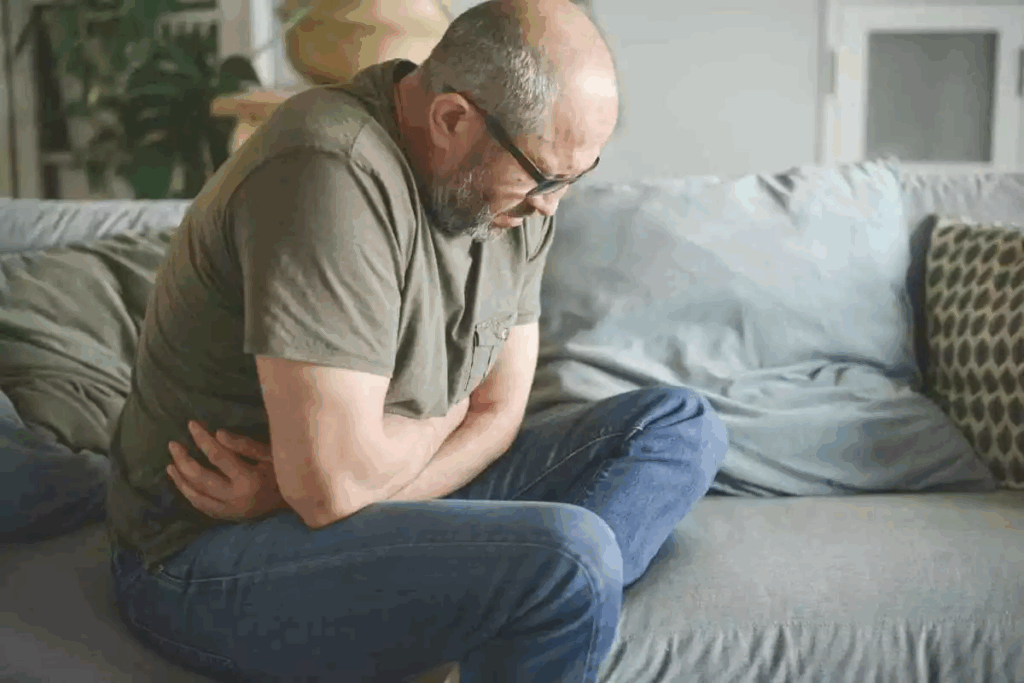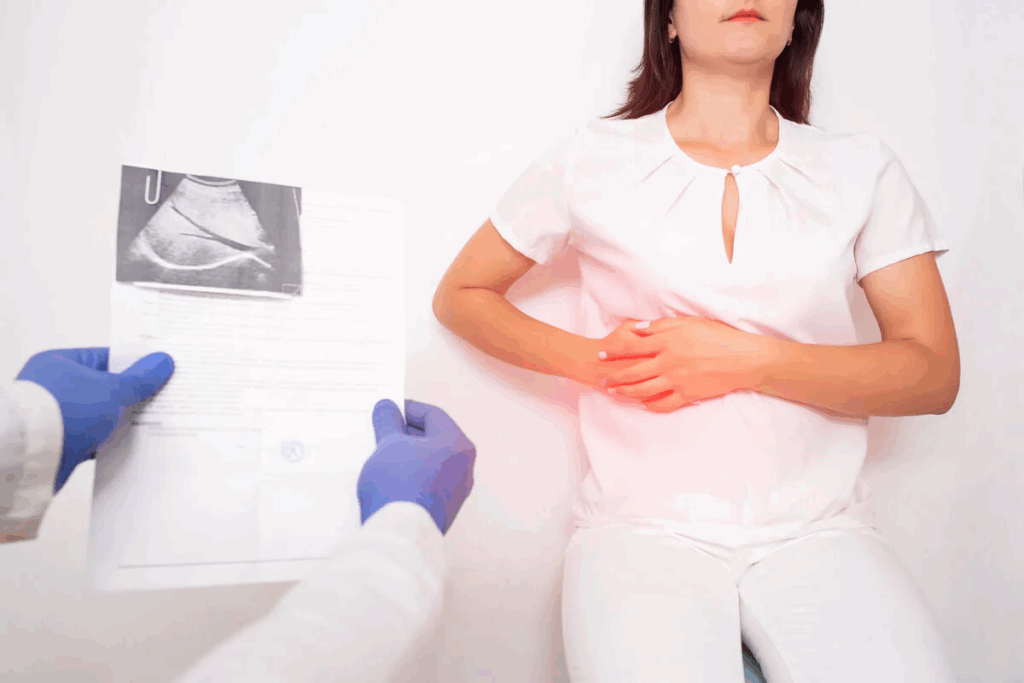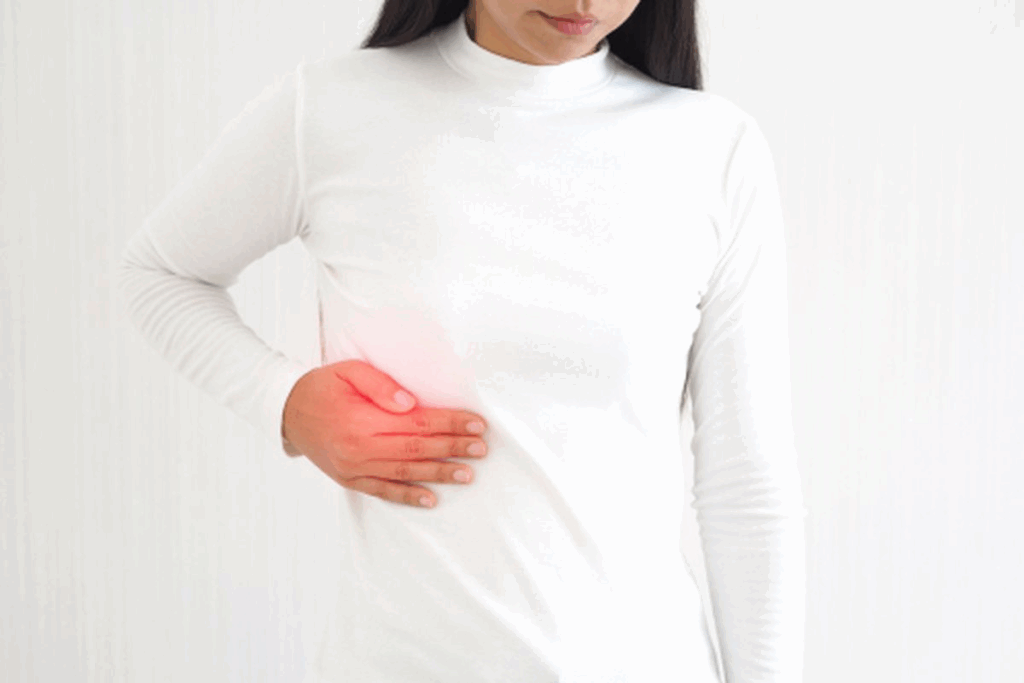
Even after gallbladder removal, people can face problems with gallstones. Bile duct stones happen when gallstones get stuck in the bile duct. This can cause a lot of pain, jaundice, and digestive issues.
Up to 15% of those with gallstones will have stones in the common bile duct. Knowing about these risks and how to manage them is key. Liv Hospital offers a patient-focused approach to help you through diagnosis and treatment, aiming for the best results.

The bile duct is key to our digestive system. It helps move bile, which is vital for breaking down fats. Knowing how it works is important.
Bile comes from the liver and is stored in the gallbladder. It makes fats easier to digest by breaking them down. Bile also helps our body absorb fat-soluble vitamins like A, D, E, and K. The bile duct carries bile to the small intestine, where it does its job.
Bile is very important for digestion. Without it, we can’t digest fats well, leading to poor nutrient absorption. Bile’s main roles include:
The bile duct system, or biliary system, is a network of ducts. It collects bile from the liver and sends it to the small intestine. The system includes:
Knowing the bile duct system’s structure is vital for diagnosing and treating problems. Any issue with the bile duct can cause serious digestive problems and even be life-threatening.

Choledocholithiasis occurs when stones block the bile duct. This can cause serious problems. Stones in the bile duct can come from the gallbladder or form in the duct itself. Knowing why these stones form is key to preventing and treating them.
Choledocholithiasis means there are stones in the common bile duct (CBD). These stones can be primary, forming in the duct, or secondary, coming from the gallbladder. When these stones block bile flow, it can lead to health issues.
A study in the Journal of Clinical Gastroenterology found that the chance of having bile duct stones varies. It’s more common in some places.
“The incidence of choledocholithiasis is higher in individuals with a history of gallstones and those who have undergone cholecystectomy.”
Bile duct stones are divided into two types based on where they come from:
Knowing if a stone is primary or secondary helps doctors decide how to treat it.
Several factors increase the chance of getting bile duct stones. These include:
| Risk Factor | Description |
| Gallstones | Having gallstones raises the risk of bile duct stones. |
| Obesity | Being overweight is linked to a higher risk of gallstones, which can move to the bile duct. |
| Dietary Habits | Eating a diet high in fat and low in fiber can increase gallstone risk. |
| Age | The risk of bile duct stones grows with age. |
Knowing these risk factors helps in preventing and catching bile duct stones early. Healthcare providers can take steps to prevent them and watch at-risk people closely for signs.
Bile stones can form even if you don’t have a gallbladder. This happens for two main reasons. First, leftover stones from before the surgery can cause trouble. Second, new stones can form in the bile ducts after the gallbladder is gone.
Even after a gallbladder is removed, bile duct stones can form. Residual stones are those left behind during surgery. They can block the ducts and cause infections.
Newly formed stones appear in the bile ducts after the gallbladder is removed. Their formation is complex, involving changes in bile and flow.
“The presence of bile duct stones after cholecystectomy highlights the need for continued surveillance and management to prevent complications.”
It’s important to know the difference between residual and newly formed stones. Residual stones are usually dealt with right away. But newly formed stones need a long-term plan to prevent more from forming.
Choosing the right treatment depends on the type of stone. Residual stones might need quick action. But newly formed stones need ongoing care, like diet changes and regular check-ups.
Doctors say, “The risk of new stones in the bile ducts shows why follow-up care is so important.”
Bile duct stones are a big worry for many people. They can happen to anyone, with or without a gallbladder. Knowing how common they are helps doctors understand the risks better.
About 10% to 15% of people with gallstones also have stones in the bile duct. This shows a large number of people are at risk. The chance of getting bile duct stones changes with age, gender, and where you live.
Key statistics on the incidence of bile duct stones include:
Even after removing the gallbladder, bile duct stones can happen. The chance of getting them after surgery is between 2% to 20%. This depends on things like leftover stones and the surgery method.
Factors influencing the occurrence of bile duct stones post-cholecystectomy include:
| Factor | Description | Impact on Occurrence Rate |
| Residual Stones | Stones left behind during surgery | Higher risk of recurrence |
| Surgical Technique | Method used for cholecystectomy | Varies with technique |
| Bile Duct Anatomy | Variations in bile duct structure | Affects stone formation risk |
Knowing these stats is key to taking care of patients. It helps doctors understand the risks of bile duct stones in everyone, and those who have had their gallbladder removed.
It’s important to know the symptoms of bile duct stones to get medical help quickly. These stones can cause different symptoms that affect how well you feel and live.
Bile duct stones can show up in several ways. You might feel severe abdominal pain in the upper right side that spreads to your back. Jaundice, or yellow skin and eyes, happens when bile flow is blocked.
Other signs include digestive problems like nausea, vomiting, and changes in stool or urine color.
Some people have chronic pain from bile duct stones. This pain can last a long time because of irritation or inflammation. The term “Gore stones pain” is for pain from stones left in the bile duct after the gallbladder is removed.
If you have severe abdominal pain, fever, or jaundice, get medical help right away. These signs could mean serious problems like infection or blockage. Quick action can help a lot.
Untreated bile duct stones can seriously harm your health. They can block the bile duct, cause infection, and lead to inflammation in the digestive system.
Bile duct obstruction is a major problem. A stone can block the bile duct, stopping bile from reaching the intestine. This leads to a buildup of bilirubin, causing jaundice and yellowing of the skin and eyes.
Other symptoms include dark urine, pale stools, and itching. If not treated, these symptoms can worsen.
Acute cholangitis is an infection of the bile duct. It’s serious and can be life-threatening. Symptoms include fever, abdominal pain, and jaundice.
Quick medical treatment is key to managing acute cholangitis. Without it, the infection can spread to the bloodstream, causing sepsis.
Bile duct stones can also cause pancreatitis, inflammation of the pancreas. A stone in the pancreatic duct can trigger inflammation. Symptoms include abdominal pain, nausea, and vomiting.
Severe pancreatitis can cause serious problems like pancreatic necrosis, abscesses, and organ failure. It’s important to recognize symptoms early for effective treatment.
| Complication | Symptoms | Potential Outcomes |
| Bile Duct Obstruction | Jaundice, dark urine, pale stools, itching | Cholangitis, liver damage |
| Acute Cholangitis | Fever, abdominal pain, jaundice | Sepsis, organ failure |
| Pancreatitis | Abdominal pain, nausea, vomiting | Pancreatic necrosis, abscesses, organ failure |
Diagnosing bile duct stones needs a mix of lab and imaging tests. Getting it right is key to the right treatment.
Blood tests are important at the start. They show if there’s a blockage or infection in the bile ducts.
Abnormal liver function tests are a big clue. High bilirubin and alkaline phosphatase mean there’s a blockage.
| Blood Test | Normal Range | Significance in Bile Duct Stones |
| Bilirubin | 0.1-1.2 mg/dL | Elevated levels indicate bile duct obstruction |
| Alkaline Phosphatase | 20-140 U/L | Raised levels suggest bile duct involvement |
Imaging is key for seeing stones and checking the biliary system.
“MRCP has emerged as a valuable diagnostic tool for bile duct stones, providing high sensitivity and specificity without contrast agents or invasive procedures.” – Gastroenterology Journal.
Endoscopy is vital for diagnosing and treating bile duct stones.
Endoscopic Retrograde Cholangiopancreatography (ERCP) is the top choice for diagnosing. It lets doctors see the biliary system and treat it at the same time.
Diagnosing bile duct stones often uses a mix of methods. This depends on the patient’s situation and needs.
Gallstones might pass on their own, but it depends on a few things. The size, number, and type of stones matter a lot.
The size of the gallstone is very important. Small stones can usually pass through the bile ducts easily; bigger stones might get stuck and cause problems.
Having more than one stone makes it harder for them to pass naturally. People with just one stone have a better chance.
The type of stone also affects how likely it is to pass. Cholesterol stones are common and might pass differently from pigment stones.
| Factor | Influence on Natural Passage |
| Size | Small stones are more likely to pass |
| Number | Single stones are more likely to pass than multiple stones |
| Composition | Cholesterol stones may have a different passage likelihood compared to pigment stones |
Even though small gallstones might pass on their own, bigger ones or those causing pain need medical help. Signs like severe pain, jaundice, or infection mean you should see a doctor right away.
If stones don’t pass naturally, doctors have many ways to help. This includes ERCP and surgery.
It’s key to know what affects gallstone passage to choose the right treatment. Doctors look at these factors to decide if waiting or ng medical help is best.
There are many ways to treat bile duct stones. The choice depends on the stone’s size, location, and the patient’s health.
Endoscopic Retrograde Cholangiopancreatography (ERCP) is the top choice for treating bile duct stones. It uses an endoscope to reach the bile duct through the mouth. A small cut is made to remove the stones.
ERCP has many benefits:
ERCP is the first choice, but other treatments are used in certain cases. These include:
Dealing with recurring bile duct stones is tough. Strategies include:
Effective treatment of bile duct stones, whether by ERCP or other methods, is key. It helps prevent serious problems and improves patient care.
Life after gallbladder removal means making smart choices to lower bile duct stone risk. Surgery removes gallstones’ main source, but it’s not a complete fix. Taking preventive steps can greatly lower bile duct stones.
Diet is key in preventing bile duct stones after gallbladder removal. Increasing fiber intake boosts digestive health and lowers stone risk. Foods high in fiber include fruits, veggies, and whole grains.
It’s also wise to avoid high-fat foods as they can cause bile duct contractions, leading to stones or discomfort. A balanced diet with lean proteins, healthy fats, and complex carbs supports digestive health.
| Dietary Component | Recommended Foods | Foods to Avoid |
| Fiber | Fruits, Vegetables, Whole Grains | Processed Foods, Refined Grains |
| Fat | Healthy Fats (Avocado, Olive Oil) | High-Fat Foods (Fried Foods, Fatty Meats) |
Along with diet changes, lifestyle tweaks can prevent bile duct stones. Maintaining a healthy weight through exercise and a balanced diet lowers stone risk. Drinking plenty of water is also key, as dehydration can raise stone risk.
For those who’ve had their gallbladder removed, regular health check-ups are vital. Imaging tests like ultrasound or MRCP may be needed to watch the bile ducts for stones or other issues.
Combining diet changes, lifestyle tweaks, and regular health checks can greatly reduce bile duct stone risk after gallbladder removal. It’s important to work with a healthcare provider to create a personalized prevention plan.
Bile duct stones and gallstones are serious health issues. They need quick medical care. Knowing the risks, symptoms, and treatments is key, even for those without a gallbladder.
About 15% of people have gallbladder stone disease. Choledocholithiasis affects 10-20% of those with symptoms. Spotting symptoms early is important, thanks to risk factors like being female or over 55.
Preventing these stones is also important. Eating right and living healthy can help. For more info, check out InTechOpen. They have lots of details on managing these conditions.
Treatment often includes removing stones and the gallbladder. ERCP or surgery are common methods. ERCP can remove stones 80-90% of the time. Knowing the facts and acting early can lower your risk of these problems.
Bile duct stones, also known as choledocholithiasis, are hard deposits in the bile duct. They can form in the bile duct itself or from stones moving from the gallbladder.
Yes, bile duct stones can happen even after the gallbladder is removed. This can be due to leftover stones or new ones forming.
Symptoms include severe abdominal pain, jaundice, and fever. Chronic pain can also occur. It’s important to seek medical help right away if symptoms show up.
Small gallstones might pass naturally, but bigger ones usually need medical help. The size and location of the stone affect this.
ERCP (Endoscopic Retrograde Cholangiopancreatography) is a procedure for diagnosing and treating bile duct stones. A flexible tube is inserted through the mouth into the bile duct to remove stones or blockages.
Making dietary changes, adopting a healthy lifestyle, and regular monitoring can lower the risk of bile duct stones after gallbladder removal.
Untreated bile duct stones can cause bile duct obstruction, infection, and pancreatitis. These can be severe and even life-threatening.
Diagnosing bile duct stones involves lab tests, imaging studies (like ultrasound, CT, and MRCP), and endoscopic procedures.
Yes, maintaining a healthy weight, eating a balanced diet, and avoiding certain foods can help prevent bile duct stones.
Yes, other treatments include endoscopic procedures, surgery, and strategies for managing recurring stones.
Subscribe to our e-newsletter to stay informed about the latest innovations in the world of health and exclusive offers!
WhatsApp us